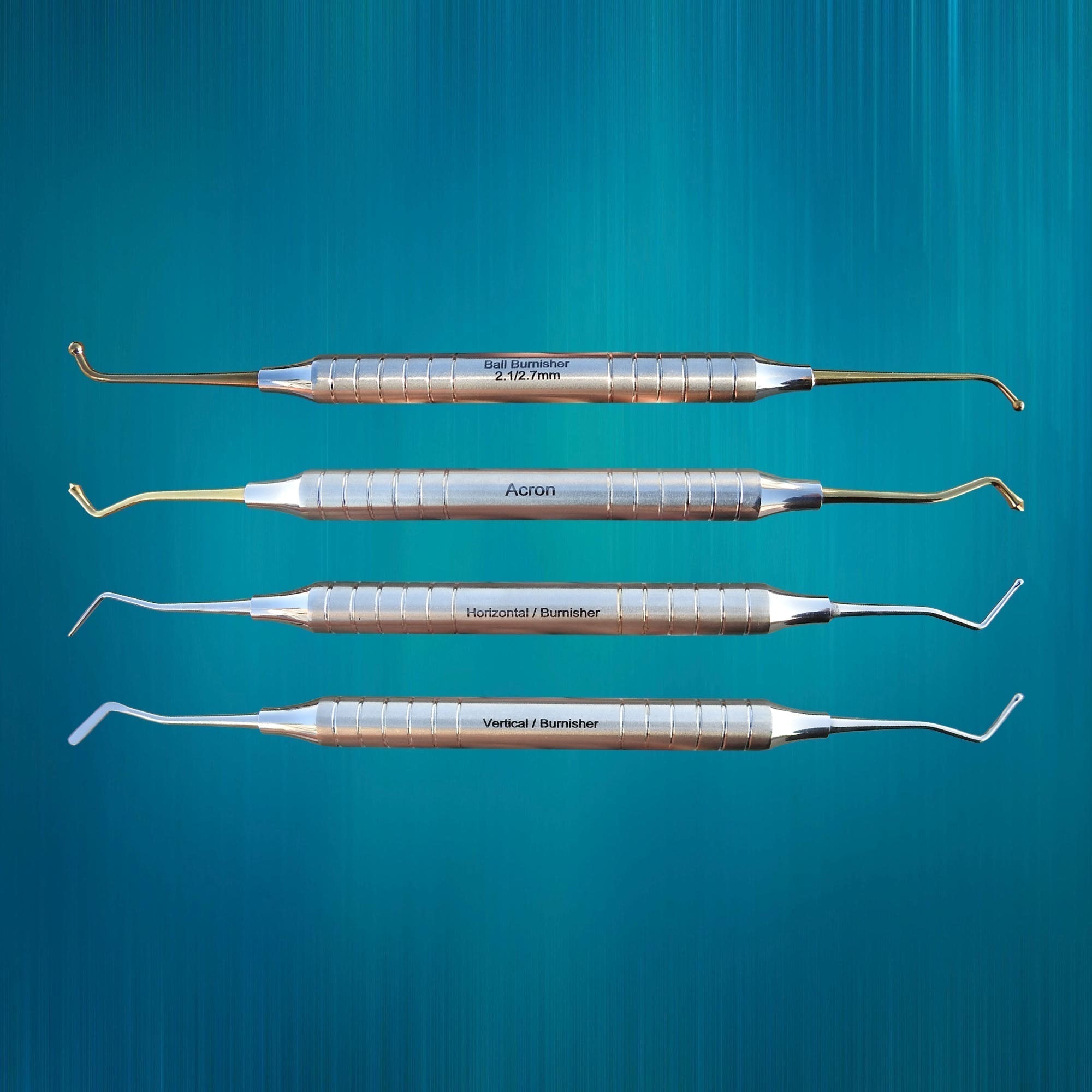What Are Ball Burnishers Used For?

What Are Ball Burnishers Used For? – A Complete Guide for Dental Professionals
Introduction: What Is a Ball Burnisher?
In the world of restorative dentistry, precision and polish are everything. Enter the ball burnisher—a sleek, stainless-steel hand instrument with a spherical tip used to perfect and finish dental restorations.
But what exactly does it do? And why is it a must-have tool in every dentist’s tray?
Let’s break it down.
What Is a Ball Burnisher Used For?
Ball burnishers are primarily used in restorative dental procedures, especially during and after the placement of amalgam or composite restorations. Here's what they're used for:
1. Shaping and Smoothing Restorations
Once restorative material (like amalgam) is placed, a ball burnisher helps in condensing, shaping, and adapting the material to the tooth's natural contours.
-
Creates smooth transitions at margins
-
Prevents overhangs and rough edges
-
Reduces the need for excessive polishing later
2. Contouring Occlusal Surfaces
The ball-shaped tip allows precise definition of occlusal anatomy (the biting surface of molars and premolars), making restorations more natural and functional.
3. Initial Condensation of Amalgam
Although condensers are primary tools for packing amalgam, burnishers assist in final condensation by gently pushing material into place, ensuring better adaptation to cavity walls.
4. Enhancing Marginal Integrity
A well-burnished restoration means tighter margins, reduced microleakage, and improved long-term success of the filling.
Types of Ball Burnishers
Ball burnishers come in various shapes and sizes, allowing customization based on the restoration site:
-
Single-ended burnishers – One spherical tip; great for limited access areas.
-
Double-ended burnishers – Two tips of varying diameters; versatile and efficient.
-
Small and large ball tips – Small tips for tight interproximal areas; large tips for broader occlusal surfaces.
Common sizes include:
-
1.5 mm / 2.0 mm
-
1.0 mm / 1.5 mm
-
2.5 mm / 3.0 mm
Material and Sterilization
Most burnishers are made of high-grade stainless steel for durability, corrosion resistance, and ease of sterilization.
✅ Autoclavable
✅ Reusable
✅ Long-lasting with proper care
Why Every Dentist Needs a Ball Burnisher
1. Improves Restoration Longevity
A smooth restoration is less likely to trap food particles, reducing secondary caries and plaque buildup.
2. Enhances Aesthetic Results
Burnishers help achieve glossy, mirror-like finishes that are pleasing to patients.
3. Boosts Efficiency
Quick smoothing and adaptation reduce chair time and increase overall workflow.
Ball Burnisher vs. Other Burnishers
| Instrument | Tip Shape | Best Use |
|---|---|---|
| Ball Burnisher | Spherical | Occlusal shaping, margin adaptation |
| Beavertail Burnisher | Flat/tapered | Large surface burnishing, broad shaping |
| Acorn Burnisher | Pointed/acorn | Carving occlusal grooves and cusps |
Pro Tips for Using a Ball Burnisher
-
Use light, controlled pressure to avoid displacing material.
-
Slightly warm the burnisher to reduce friction and improve surface smoothness (especially with amalgam).
-
Always check for marginal integrity after burnishing using an explorer.
Common Mistakes to Avoid
❌ Over-burnishing – Can distort the anatomy or thin out material at margins.
❌ Using on uncured composite – Always cure before burnishing composites.
❌ Skipping post-polish – Burnishing helps, but final polishing is still essential for perfection.
FAQs
Can you use a ball burnisher on composite?
Yes, but only after the composite has been light-cured. Pre-curing may lead to distortion.
Is a ball burnisher essential in all fillings?
Not always, but it’s highly recommended for posterior restorations and amalgam fillings.
How do I choose the right size burnisher?
Match the burnisher size to the restoration site. Smaller burnishers are ideal for tight, detailed work; larger ones for bulk finishing.
Final Thoughts
Ball burnishers might look simple, but their role is critical in ensuring the functionality, durability, and beauty of dental restorations. Whether you're a dental student learning the ropes or an experienced clinician, understanding how to use a ball burnisher effectively can elevate the quality of your restorative work.
Don’t underestimate the power of a polished finish. In dentistry, precision = trust.
